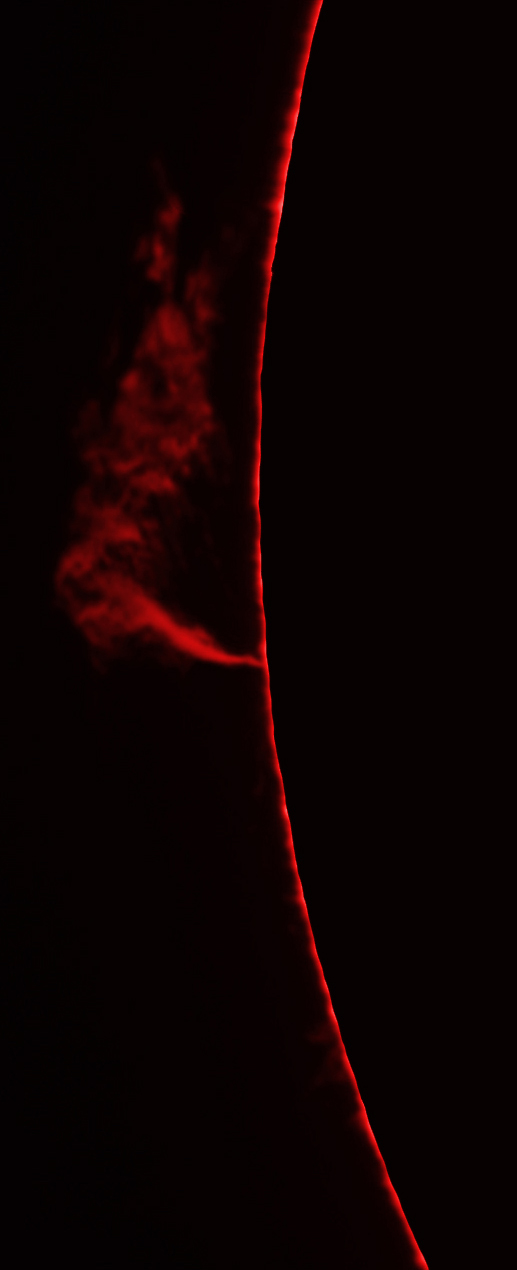Prelude to Disaster
More sunspots had rotated onto the Sun's disk just three days after my June 26 solar observations. Despite predicted scorching temperature I decided to try imaging the now multi-spotted Sun. My solar telescope and camera were hastily set up as early as possible on the morning of June 29, but I was immediately disappointed by poor seeing conditions. Solar features wavered so much it was hard to focus. I persevered hoping for some moments of atmospheric calm. It takes about 27 seconds to record enough video to produce one still image, so I needed just a few 27-second periods of relative calm. Only one hour after beginning I was pouring sweat and starting to feel woozy as the temperature reached 90F (32.2C). At that point some high clouds began crossing the Sun. It was time to quit.
Even though seeing was generally poor, I was able to capture four respectable images. First, look at sunspot 1515, a growing monster which later became very big, complex, and eruptive:
 |
| Sunspot 1515 (Click for full detail.) |
Sunspot 1513 had also rotated onto the Sun's disk since June 26:
 |
| Sunspot 1513 (Click for full detail.) |
 |
| Sunspot 1512 and filament (Click for full detail.) |















